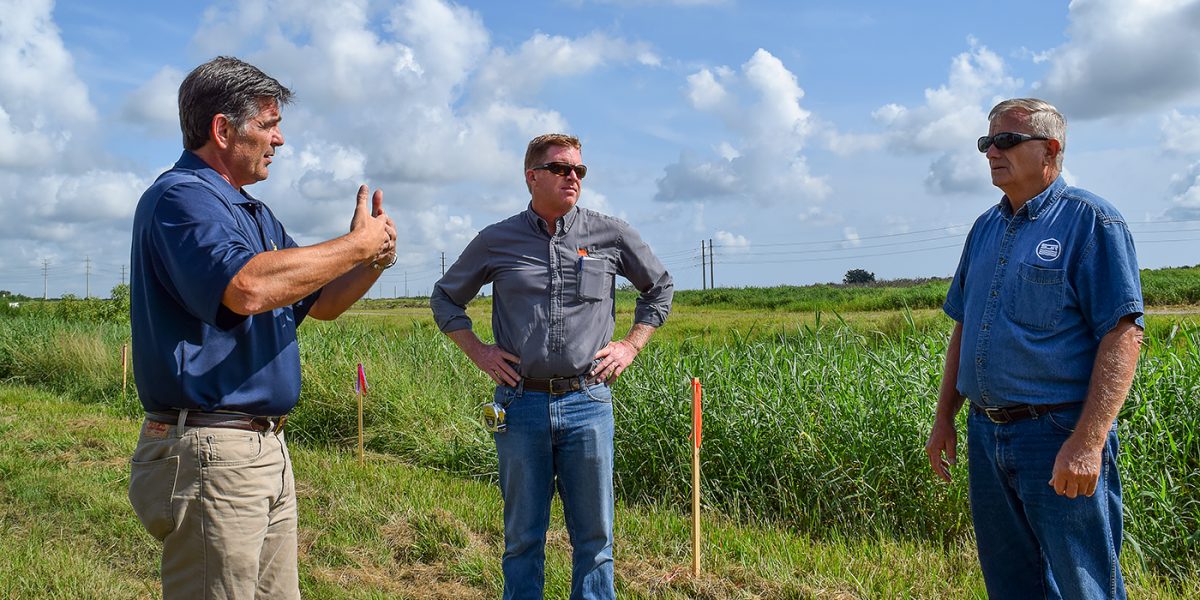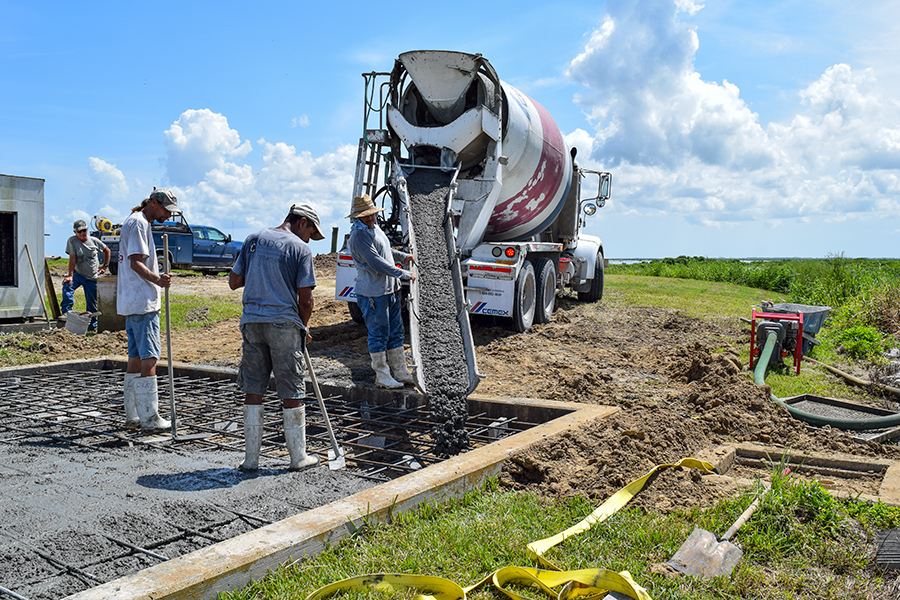Walking nature’s tightrope

What it takes to maintain 700,000 acres of land
For Woody Boynton, the devil is in the details. He’s riding shotgun in a white Chevy SUV, inspecting the gravel that’s been spread across the top of a levee at the 6,500-acre St. Johns Water Management Area in Indian River County, known by local anglers as the Stick Marsh. To the untrained eye, the crushed material seems to be a stabilizing improvement, but Boynton isn’t satisfied. He knows from experience that the new topping has been spread a couple of feet too wide. He worries that some of the material will tumble down the levee’s flanks during the next heavy soaker.
Boynton is the bureau chief for the St. Johns River Water Management District’s Bureau of Operations and Maintenance. His scrutiny is relentless and it might even drive the bureau’s 35 staff members slightly crazy on some days, but the bureau hums like a well-oiled machine as it attends to approximately 735,500 acres of land throughout the District’s 18-county service area.
Whether it’s the scrub oak hammocks harboring endangered Florida scrub jays or the 166,000 acres of painstakingly restored marsh in upper St. Johns River basin, the District buys land as part of its work to protect water resources. Virtually all District property is open to the public for activities that are compatible with conservation. The only areas off-limits are those under construction or restoration projects.
However, the District’s conservation and flood protection work doesn’t end with a land purchase. As a rule, land ownership marks the beginning of an ongoing battle against the ravages of nature. Concrete water control structures crack and crumble over time. Levees erode. Invasive plants quietly spread and overtake native vegetation or clog waterways. It never ends.
Ironically, the most common culprit in the degradation of levees and structures is the very element that the District is charged with protecting and preserving: water.
“Erosion is the most common challenge we face,” Boynton says. “We’re also dealing with Florida’s climate and the rate at which plants grow in Florida. Vegetation can overtake a levee if you don’t have a program in place. We manage 95 percent of our levees with herbicides and mowing. Timing is everything. If you miss a year, the vegetation can regain a foothold and you’re back to mechanical vegetation removal, which is more time consuming and expensive.”
Numbers perhaps best showcase the scope of the District’s operations and maintenance program. The bureau is responsible for 105 miles of federally constructed levees (primarily at the headwaters of the St. Johns River), 147 miles of farm levees, 12 major flood control structures, 55 smaller flood control structures, seven weirs, 1,057 miles of roads, 562 miles of trails and three navigation locks. Oh, and there’s also 4,000 acres of land to mow and a slew of kiosks, fences, signs and primitive campsites to maintain.
At any given time, upward of 15 construction or rehabilitation projects are underway. On this day, Boynton and Jimmy Rider, the program manager for the south region of the District, meet with a crane operator to discuss the best strategy for plunking a 100-foot-long pedestrian bridge across a waterway at the Micco Stormwater Park in south Brevard County. The stormwater park will serve the dual functions of providing trails, kiosks and other amenities for the public while simultaneously filtering pollutants from stormwater before they can reach the nearby St. Sebastian River.
“Just at this park there are at least five projects we’re working to complete,” Boynton says. “We’re removing fill from the premises, installing the foot bridge, adding safety rails at the water control structures and building a public parking lot. Everything is fluid and moving forward all the time.”
Before the day is through, Boynton will have inspected a canal where water lettuce and hyacinth were so thick that Operations employees had to use airboats to blow the floating plants to shore before they had a chance to clog several culverts, visited a site where contractors poured a concrete pad necessary for a new diesel fuel tank for a pump station at the Fellsmere Water Management Area, and rode along miles of levees to determine sections needing a facelift.
For years, the sheer magnitude of District lands kept operations staff scrambling to keep pace with ongoing maintenance. That changed about three years ago, when the District developed a work plan that emphasized long-term improvements that reduced the need for repeated repairs.
“We were spending so much time and money on maintenance that less time was spent on major improvements,” says Boynton’s boss, Karl Hankin, director of the Division of Projects. “We’ve adopted work plans and we’re systematically reconstructing major levees. Flood protection is a cornerstone mission of the District and we need to ensure that we meet the mission’s goals.”
Meeting the mission is more complex than it sounds, especially when Operations and Maintenance juggles its work plan with requests from other District bureaus and divisions. One day, it may be a request for a driveway to provide well drillers with access to a remote location to drill a test well; another day, the District’s land managers ask Operations to build a horse trailer parking lot at a site popular with horseback riders.
“All these little hiccups occur, whether it’s an unexpected work order or a structure needing repair,” says Rider. “We do emergency jobs all the time to ensure we continue making progress toward reaching our mission goals.”
Rider and Boynton are off to their next stop. A wildlife officer reported what appeared to be a sinkhole in a remote spot north of Sawgrass Lake Water Management Area west of Melbourne. Rider navigates the white Chevy to a fissure in the ground. The hole is marked by wooden stakes and pink ribbon that serve as warnings to unsuspecting adventurers. Water from a nearby swamp appears to be flowing into the hole and reappearing as a boil in a nearby canal. The boil could pass for a submarine spring.
Rider scoops water into his cupped hands and sniffs.
“There’s a strong smell of sulfur,” he says. “There may be an old abandoned well flowing into this water.”
Boynton and Rider have already shifted to an animated discussion on remedies as they scan the swamp, notice the high-water levels and observe the direction of its flow.
“It’s all about constant communication,” say Boynton, a Maine native who remembers, as a boy, fiddling with his dad’s barn full of tools. “My group does all the work on the ground. My job is to ensure their jobs are easier and straightforward. I’m making sure all the partnering agencies and contractors are on the same page and that the money is available. There’s nothing I’d rather be doing. In college, I was a foreman at a construction company. It was a summer job. I’ve been around construction equipment my whole life. I always knew I’d be in construction.”
And Boynton’s phone rings. Again.
Note: This story originally appeared in the winter 2018 (January 2018) edition of the District’s StreamLines publication.


